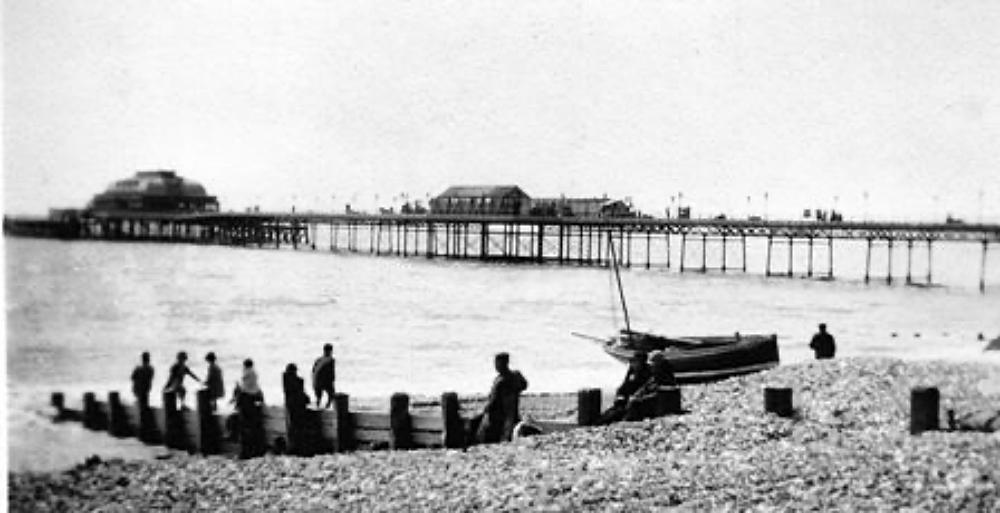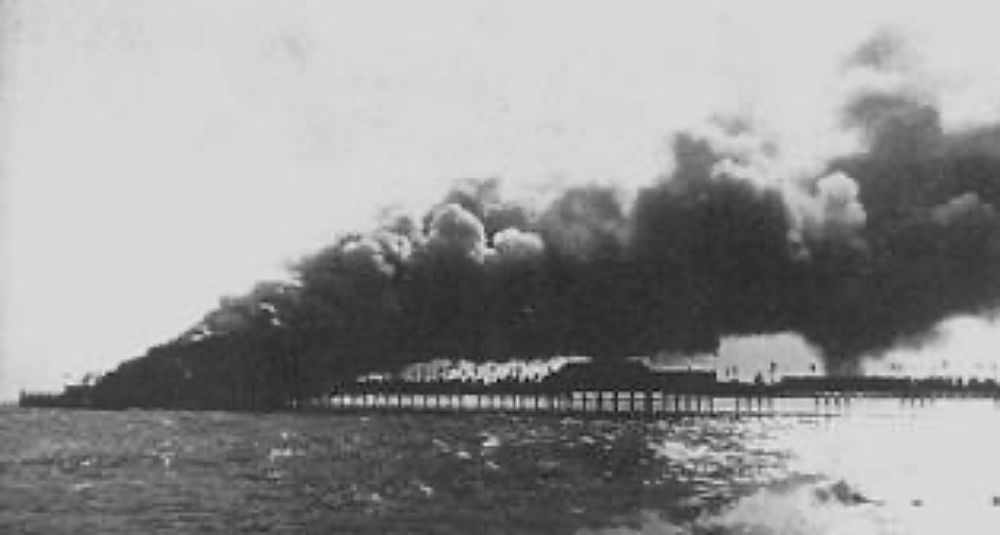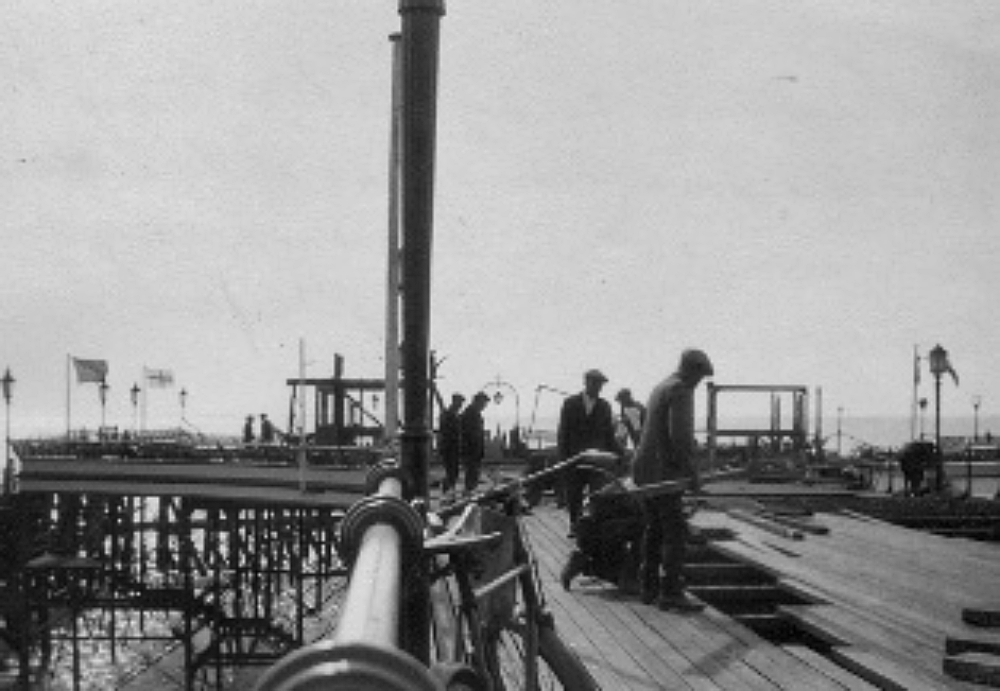Pier pressure
THE giant flames that recently devoured the Grand Pier at Weston-super-Mare brought back vivid memories of the day in September, 1933, when Worthing Pier met a similar fate. Freddie Feest recalls how Worthing’s seaside pride and joy not only survived a raging inferno 75 years ago, but also rose, phoenix-like, from the ashes to be awarded an accolade in recent times as the best pier in the land.

BEING long, thin and built over water, seaside piers are vulnerable structures and, when the Southern Pavilion of Worthing Pier mysteriously caught fire on September 10, 1933, firemen had to attach hose upon hose to get water from the nearest hydrant, which was more than 500 yards away.
That day, as a young lad, I was visiting Brighton and from 10 miles away was startled to see the plume of black smoke rising over Worthing’s pride and joy as flames rapidly consumed its southern pavilion.

By then, the fire brigade was already on the pier, where they found the pavilion ablaze and the flames being rapidly fanned by a strong easterly wind.
As firemen unreeled hoses, more than 300 holidaymakers, many in bathing costumes, helped to tear up planks with picks and crowbars in an attempt to prevent the flames creeping along the pier to the Pier Pavilion.
In a desperate measure to rescue as much as possible from the flames, a car was driven on to the pier, where it was loaded by a human chain with the most valuable items of furniture from the southern pavilion, which were then ferried to safety.
The blaze was seen from Selsey Bill to Beachy Head and the Worthing Herald’s staff photographer, the late Alan Duncan, returned all the way from Eastbourne to get his pictures, after sighting the fire from Eastbourne’s cliffs.
It took only 30 minutes for the pavilion to be reduced to a charred mass of timber. With it went the last remaining evidence of the Victorian structure that was built in 1889 to replace the simpler, original pier built in 1862.

Fortunately, there seems to have been more available finance, labour and a greater determination to restore the status quo in the 1930s – and with it, fewer delays caused by red tape.
By July, 1935, a new Art Deco-style southern pavilion had risen from the ashes and, because it included a solarium fitted with ultra-violet lamps and vita-glass windows, it was soon being described as “the sun trap of the south coast”.
Total cost of this building was £18,000, of which £13,717 was offset against the insurance settlement for the burned pavilion it replaced.
Two years later, a new, central amusement pavilion was added to the pier’s attractions and – perhaps the most beneficial long-term improvement of all – a windshield was built along the entire length of the pier.
By this time, Herbert Lodge and the Municipal Orchestra were giving three concerts weekly in the Pier Pavilion, plus a Sunday celebrity concert that became one of the most successful of Worthing’s pre-war entertainments.
Heading the bill on the day World War Two was declared, Sunday, September 3, 1939, were Elsie and Doris Walters, who lived at Steyning. In their characterisations as Gert and Daisy, they were to play a big role in maintaining public morale during the war years that followed.
Keydates
| 1862 | First Worthing Pier officially opened |
| 1889 | First Southern Pavilion added, width of the pier decking doubled and its single central box-like tollgate replaced by two elegant kiosks |
| 1907-09 | King Edward VII unofficially visited the Pier several times, while staying at Beach House |
| 1913 | Pier collapsed into sea during violent Easter storm |
| 1914 | Reconstructed Pier opened by the Lord Mayor of London |
| 1920 | Pier purchased by Worthing Corporation “rust and all” |
| 1925 | Extensive repairs to Pier and building of the Pier Pavilion begins |
| 1926 | New Pier Pavilion opens as home of Britain’s first full-time, all-year-round municipal orchestra |
| 1933 | Southern Pavilion destroyed by fire |
| 1933 | Southern Pavilion destroyed by fire |
| 1935 | New Southern Pavilion opened |
| 1937 | New central amusement pavilion opens and windshield erected along the pier’s length |
| 1940 | Military blow a 120ft gap in the Pier structure to frustrate expected German invasion |
| 1949 | Pier reopened to the public |
| 2008 | Chosen as Pier of the Year by the National Pier Society |